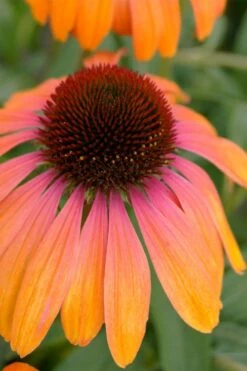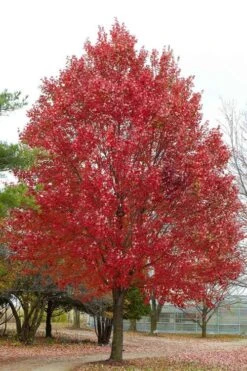Shumard Red Oak Tree (Quercus Shumardii) – 3 Gallon Pot
$79.97 Original price was: $79.97.$55.98Current price is: $55.98.
SKU: D2LSC 1104622840 Category: NATIVE PLANTS
- Get the Best for Less
- No-Questions-Asked Returns
- Effortless Shopping, Quality Products
- 7 days free returns

Shumard Red Oak
Quercus shumardii
Other Common Names: Shumard’s Oak, Shumard Oak
Plant Details
USDA Plant Hardiness Zones: 5a-9b Find Your Zone
Shrub Type: Deciduous Tree
Height at Maturity: 40-60′
Width at Maturity: 30-40′
Spacing: 45+ feet for space between trees
Growth Habit / Form: Upright Pyramid when young, Upright Rounded with age
Growth Rate: Moderate to Fast, 1-2′ per year
Flower Color: Yellow Green
Flower Size: Insignificant
Flowering Period: Spring
Flower Type: Catkin
Fragrant Flowers: na
Foliage Color: Deep Green, Red to Burgundy Red shades in fall
Fragrant Foliage: No
Fruit: Yes, copper-brown acorn nuts are edible after tannins are boiled or leached out,
Sun Needs: Full Sun to Part Shade; at least 5 hours of direct sun per day suggested
Water Needs: Average; drought tolerant when established
Soil Type: Clay, Loam, Sandy, Silty
Soil Moisture / Drainage: Moist But Well-Drained to Occasionally Wet; Drought tolerant when established
Soil pH: 4.5–7.0 (Acid to Neutral)
Maintenance / Care: Low
Attracts: Birds, Butterflies, Mammals, Moths
Resistances: Cold Temperatures (-20F), Deer, Disease, Drought (when established), Dry Soil (when established), Heat, Humidity, Pollution (Air)
Description
One of the faster growing of North American native oak trees, the Shumard Red Oak can add up to 2 feet or so in height per year reaching 40 to 60 feet tall and 30 to 40 feet wide when all grown up. Young trees have a pyramidal form but the canopy rounds out with age. The large 7 to 9 lobed leaves up to 8 inches long are a lustrous dark green in summer changing to very attractive shades of red to burgundy-red in fall. Insignificant flowers occur in spring in the form of catkins which are followed by oval shaped copper-brown acorns wearing a bowl-shaped cap. Young bark is smooth and light gray becoming furrowed and darker with age. As is with most oak trees, the Shumard Oak has many benefits to wildlife, supporting many species of butterflies, moths, birds and mammals. Highly adaptable to many soil types and moist but well-drained to dry or wet conditions, this long-lived oak is ideal for use as a large shade tree in the sunny landscape or meadow or in groupings or groves for forestation and reclamation projects. Its tolerance to high winds, dry or wet soils and air pollution makes it a good selection for more exposed areas.
Wildlife Benefits
The wildlife benefits of the Shumard Red Oak are numerous. It is an excellent source of food for many wildlife species including deer, black bears, turkeys, woodpeckers. squirrels, rabbits, raccoons and many other species of smaller mammals and birds. It also supports a wide variety of Lepidopteran. You may see moths and butterflies such as Imperial Moth, Banded Hairstreak, Edward’s Hairstreak, Gray Hairstreak, White-M Hairstreak, Horace’s Duskywing and Juvenal’s Duskywing.
Landscape & Garden Uses
Growing 40 to 60 feet tall and 30 to 40 wide at maturity, the Shumard Red Oak is ideal for use as a shade tree around the home and outdoor living spaces. When planted on the west side of a home the shade it provides can significantly reduce cooling costs. Also excellent in groupings for forestation or reclamation projects. A fine addition to native and wildlife gardens where the acorns are eaten by squirrels, chipmunks, deer, wild turkeys, blue jays, red-headed woodpeckers and many other wildlife species. Also provides a canopy for shelter.
Suggested Spacing: 45+ feet for space between trees
Growing Preferences
The Shumard Red Oak is very easy to grow in most any moist but well-drained soil of average fertility and full sun to part shade. In the wild it can be found thriving in both wet or dry sites. We suggest 5 or more hours of direct sunlight per day. A very low maintenance tree that requires no pruning unless you want to remove some lower branches to expose more trunk. Young trees will benefit from fertilizer however older trees can usually get the nutrients needed from the soil and rain water.
Note: Find helpful advice from our experts under the Planting & Care tab above on desktop screens and below on mobile phones.
Plant Long & Prosper!
Meet The Wilson Brothers & Staff
Questions? Contact Us
Be the first to review “Shumard Red Oak Tree (Quercus Shumardii) – 3 Gallon Pot” Cancel reply
Related products
Sale!
NATIVE PLANTS
Sale!
NATIVE PLANTS
Sale!
NATIVE PLANTS
Sale!
NATIVE PLANTS
Sale!
NATIVE PLANTS
Sale!
Sale!
NATIVE PLANTS
Sale!
NATIVE PLANTS



































Reviews
There are no reviews yet.